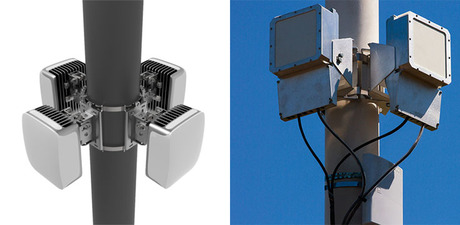Friday fragments — critical comms snippets for 29 April

A round-up of the week’s critical communications and public safety radio news for Friday, 29 April 2016.
School of the Air celebrates. The Katherine School of the Air (KSA) has celebrated its 50th anniversary. In 1966 KSA became the first distance school to operate separately from the Royal Flying Doctor Service’s radio network. The school currently serves approximately 250 students across the Northern Territory, from the Barkly Tablelands to the Tiwi Islands.
Facebook tests wireless systems. In a blog post, Facebook has announced plans for “two new terrestrial systems focused on improving the speed, efficiency and quality of internet connectivity around the world — Terragraph and Project ARIES (Antenna Radio Integration for Efficiency in Spectrum)”. Terragraph is a 60 GHz, multinode wireless system focused on bringing high-speed internet connectivity to dense urban areas, using COTS components and leveraging the cloud. Project ARIES is a “proof-of-concept effort to build a test platform for incredibly efficient usage of spectrum and energy”. Featuring a base station with 96 antennas, it can support 24 streams simultaneously over the same radio spectrum. “We currently are able to demonstrate 71 bps/Hz of spectral efficiency, and when complete ARIES will demonstrate an unprecedented 100+ bps/Hz of spectral efficiency,” Facebook says.
Straight to the top. Thinxtra said it has started the deployment of the live SIGFOX public IoT network, with installations of antennas on top of the tallest buildings in Australia: Sydney Tower Eye and Melbourne Eureka Tower. It said these two prime locations together with just six other installations provide good initial SIGFOX coverage for the two cities’ CBDs. Beyond setting up base stations on high location points, Thinxtra is discussing deployment opportunities to support local Internet of Things projects with schools, universities and local councils in Australia and New Zealand.
Russia uses its head. Russia’s United Instrument Corporation (a subsidiary of Rostec) has developed a new battlefield headset that uses bone conduction to transmit and receive audio. It includes an active hearing protection system to guard against the extreme volumes associated with gunfire and bomb blasts.
Island hams to get cheaper gear? Curtis Richardson, Minister of Communications for the Caribbean territory of Anguilla, has said he would welcome greater recognition of the role amateur radio operators play. “I think the time has come to seriously consider duty-free concessions for members who import ham radio equipment for use in the service of the country,” he told The Anguillian online. “[This is] on condition that they have bona fide membership in the Anguilla Amateur Radio Society, are in good financial standing and are committed to volunteering with the Emergency Operations Centre, Red Cross and other places when and where their service is required. I shall contemplate the issuance of special ID cards, similar to drivers’ IDs, for ham radio operators sanctioned by the Ministry of Communications.”
Hams asked to keep frequency clear. In the wake of the 16 April earthquake in Ecuador, the amateur radio community was asked to keep 7.060 MHz clear for ‘Cadena HC’ emergency traffic. DXpeditions operating RTTY on 40 metres were requested to keep pileups below 7.060 MHz.
Satcoms at sea. Satcoms provider EMC has won a contract to provide equipment, global bandwidth, services and support for a global oilfield services company’s seismic vessels and service vessels. The company will deliver its solution via a global multiprotocol label switching mobility platform and automatic beam switching technology. EMC claims to be the largest consumer of satellite capacity outside the US and Europe.
Military matters. US company SES Government Solutions has been awarded a follow-on contract to support the US Army’s TROJAN intelligence network using the SES global data network, while xG Technology has announced that has received an initial order to supply xMax software-defined cognitive radio (SDCR) networking equipment to the US Army’s Intelligence Electronic Warfare Test Directorate (IEWTD). xG will need to meet the government’s expedited specification and deliver all equipment within 30 days.
$6.1m in govt funding to improve NSW rural connectivity
The funding will improve connectivity to around 1500 premises across the central west and...
Govt funds comms for Navy, Wi-Fi for evacuation centres
The government is upgrading communication systems on Royal Australian Navy ships, and also...
Call to standardise physical security of comms infrastructure
A new white paper from TCCA seeks to catalyse the creation of a global standard for the physical...





